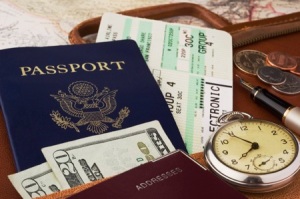Posts Tagged ‘Dunes of Tinfo Zagora’
How does the Ramadan fast affect tourists traveling to the Imperial Cities, the Sahara Desert and other regions of Morocco during this high holy holiday? Can tourists eat or drink in public during Ramadan? This article should clear up the confusion on this issue for tourists, to explain the most polite solutions for tourist behavior at this time, and to assure tourists that there is no problem with them visiting Morocco during Ramadan. Because the Islamic calendar is lunar, holidays such as Ramadan advance by approximately ten days with each subsequent year. This means that Ramadan makes a cycle through the entire calendar of twelve months each twenty-some years. This year, Ramadan started on August 12th, 2010 in Morocco. The fast presently starts in Morocco at approximately 4:30 AM, and ends in the evening at approximately 7:30 PM.
For anyone interested in touring Morocco’s kasbahs or ksars, I highly recommend starting with Kasbah Taourirt, the Pasha Glaoui’s former palace in Ouarzazate. Kasbah Taorirt was built by the Pasha Glaoui. Its location was strategic for trading routes and in the 1930’s when the Glaoui ruled the South was then considered one of Morocco’s largest Kasbahs. Kasbah Taourirt was one of the places Glaoui kept his slaves. As a Moroccan traveler you can explore its nooks and crannies to discover its history and often local female painters who sell their art inside as well as the many quality silver shops just steps outside the Kasbah.
A Zagora 4×4 Sahara Desert Tour of Amezrou Silversmiths and the Ancient Jewish Mellah offers a unique flavor of the Sahara. Places to visit include the Dunes of Tinfo, the Amezrou Silver makers workshops, the Tamagroute Pottery Cooperative, the old Spiritual Zaouia site, the Koranic Library and an adventure into the M’hamid Dunes of Sahara Desert. Zagora is a town that is nestled within the Draa Valley river in Souss-Massa-Draâ, southeastern Morocco. Zagora is surrounded by the mountain Zagora and is how this Saharan town got its name. Zagora was originally called ‘Tazagourt’ the singular of plural ‘Tizigirt’, Berber for ‘twin peaks’, referring to the form of the mountain. In old European maps the mountain Zagora is can be found however the town itself was only built in the 20th century.
The Sahara Desert is one of the top Morocco travel destinations for westerners. If you are traveling to Morocco for the holiday season or for a long needed vacation, a short break or excursion to Morocco’s Sahara Desert should be top on your list! Here is a list of the 5 most…




